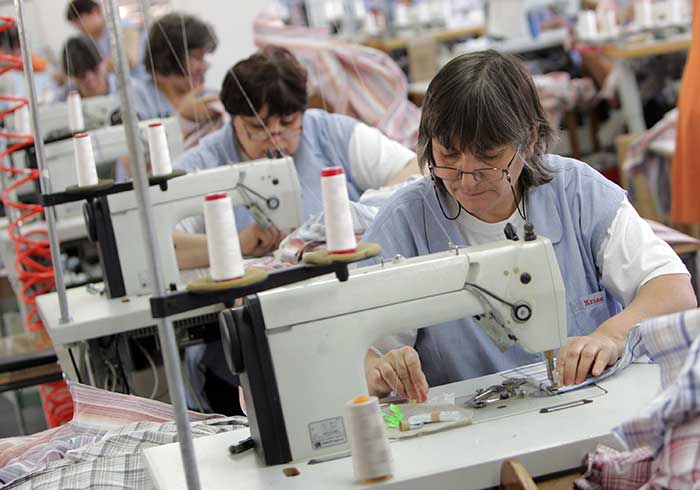web_easterneuropeworkers_shutterstock_146452787.jpg

Women working in a textiles factory
In its quarterly review of employment and social development in Europe, the commission found that there are 1.6 million fewer unemployed people in the EU compared with last year.
That brings the unemployment rate down to 8.6% – the same as in March 2009, according to Eurostat data. In June that year, the rate rose above 9%, and remained between 9-11% until the spring of 2016.
The report said while unemployment rates declined in 24 member states, big differences between them persist and there are still around 4.8 million more unemployed people than there were in March 2008.
The unemployment ranges from 3.9% in the Czech republic to 23.4% in Greece, where six years of recession have decimated the job market. Malta and the UK also have higher rates, at 4.8%, while Estonia, Austria and Belgium all saw increases in unemployment.
Overall, long term unemployment and youth unemployment also declined compared with the same period last year, by 0.7 and 1.5 percentage points, respectively.
There was an increase in employment in almost all member states, aside from Croatia where it declined and in Finland, where it stagnated. The best-performing nations were Estonia, Ireland and Lithuania.
Overall, an additional 3.2 million people were employed in the EU compared with last year. There was also a steady increase in the number of permanent jobs and full-time employment.
Marianne Thyssen, commissioner for employment, social affairs, skills and labour mobility, said the data showed the bloc’s efforts “continue to pay off”.
“However, we are not there yet,” she continued, noting that 4.2 million young people are still looking for a job.
“We will continue to invest in human capital and to support the upskilling of people to make them fit for the labour market, which more than ever demands a skilled labour force.”
Compared to other OECD countries and regions, the EU employment rate is around average. Some EU nations, including Switzerland, Denmark and the Netherlands, have some of the highest employment rates in the OECD, while Greece, Italy and Spain have some of the lowest.












